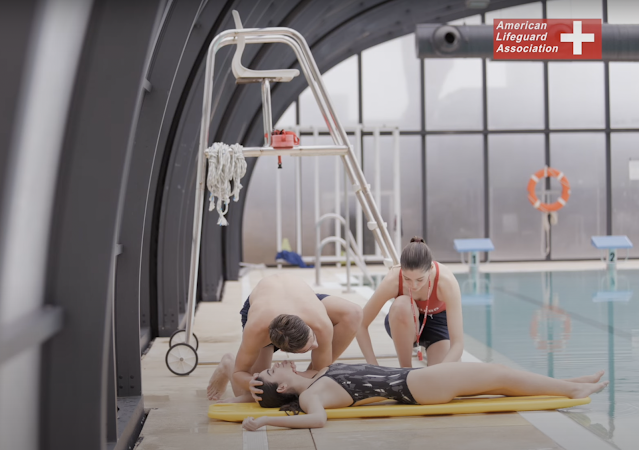Lifeguarding is a rewarding and critical profession, requiring specialized training to ensure the safety of swimmers and beachgoers. Enrolling in a lifeguard class is the first step towards becoming a certified lifeguard. This guide provides an in-depth look at what lifeguard classes entail, their importance, and how to find the right class for you. For top-tier lifeguard training, American Lifeguard USA is a leading provider.
The Importance of Lifeguard Classes
Lifeguard classes are essential for several reasons:
- Skill Development: Classes teach the necessary skills for effective surveillance, rescue operations, and first aid.
- Certification: Completing a class is required to obtain lifeguard certification, a mandatory credential for employment.
- Confidence Building: Proper training boosts confidence in handling emergencies and performing rescues.
- Compliance: Lifeguard classes ensure adherence to safety standards and regulations.
Prerequisites for Enrolling in a Lifeguard Class
Before enrolling in a lifeguard class, candidates typically need to meet certain prerequisites, including:
- Age Requirement: Generally, candidates must be at least 15 years old.
- Swimming Proficiency: Demonstrating strong swimming skills is crucial, often including the ability to swim 300 yards continuously.
- Physical Fitness: Passing a physical fitness test, which may include treading water and retrieving objects from the pool bottom.
What to Expect in a Lifeguard Class
Lifeguard classes cover a comprehensive curriculum designed to equip participants with the skills and knowledge required for lifeguarding. Key components include:
1. Water Rescue Techniques
Participants learn various rescue techniques essential for different emergency scenarios, including:
- Surface Dives: Techniques for reaching submerged victims.
- Swimming Strokes: Efficient strokes to quickly reach and assist victims.
- Rescue Equipment: Using rescue tubes and other flotation devices.
2. First Aid and CPR
A significant part of lifeguard training involves first aid and CPR:
- Cardiopulmonary Resuscitation (CPR): Training for both adults and children.
- Automated External Defibrillator (AED): Operation and usage.
- Basic First Aid: Treating minor injuries and providing initial care.
3. Spinal Injury Management
Managing spinal injuries is crucial in aquatic settings:
- Backboarding: Techniques for securing and transporting victims with suspected spinal injuries.
- Immobilization: Methods to prevent further injury during rescues.
4. Surveillance and Hazard Recognition
Lifeguards must be vigilant and capable of recognizing potential hazards:
- Scanning Techniques: Efficiently monitoring swimmers and surroundings.
- Identifying Distress: Recognizing signs of swimmers in trouble.
5. Emergency Action Plans
Lifeguards learn to implement emergency action plans (EAPs):
- Communication: Coordinating with other lifeguards and emergency responders.
- Evacuation Procedures: Safely evacuating swimmers during emergencies.
Certification and Renewal
Upon completing a lifeguard class, participants receive certification, valid for two years. Renewal is necessary to keep skills current and stay updated with any procedural changes. Renewal classes typically involve a review of key skills and new techniques or regulations.
Certification Through American Lifeguard USA
American Lifeguard USA offers comprehensive lifeguard classes designed to meet the highest standards. Their courses are renowned for their quality and thoroughness. Key features of their programs include:
- Experienced Instructors: Led by certified professionals with extensive experience.
- Flexible Schedules: Courses available at various times to suit different needs.
- Comprehensive Curriculum: Covering all essential skills and knowledge areas.
How to Enroll in a Lifeguard Class
Enrolling in a lifeguard class is straightforward. Here’s how you can get started with American Lifeguard USA:
- Visit the Website: Go to American Lifeguard USA to explore available classes.
- Choose a Class: Select a class that fits your schedule and meets your needs.
- Register Online: Complete the online registration form and submit any required documents.
- Attend the Class: Participate in the training sessions and complete all required assessments.
Conclusion
Lifeguard classes are the foundation for a successful career in lifeguarding. They provide the necessary skills, certification, and confidence to handle emergencies and ensure the safety of swimmers. By enrolling in a class with American Lifeguard USA, you can be assured of receiving top-notch training that prepares you for this vital role. Start your journey towards becoming a certified lifeguard today by signing up for a lifeguard class and making a difference in your community.



0 Comments